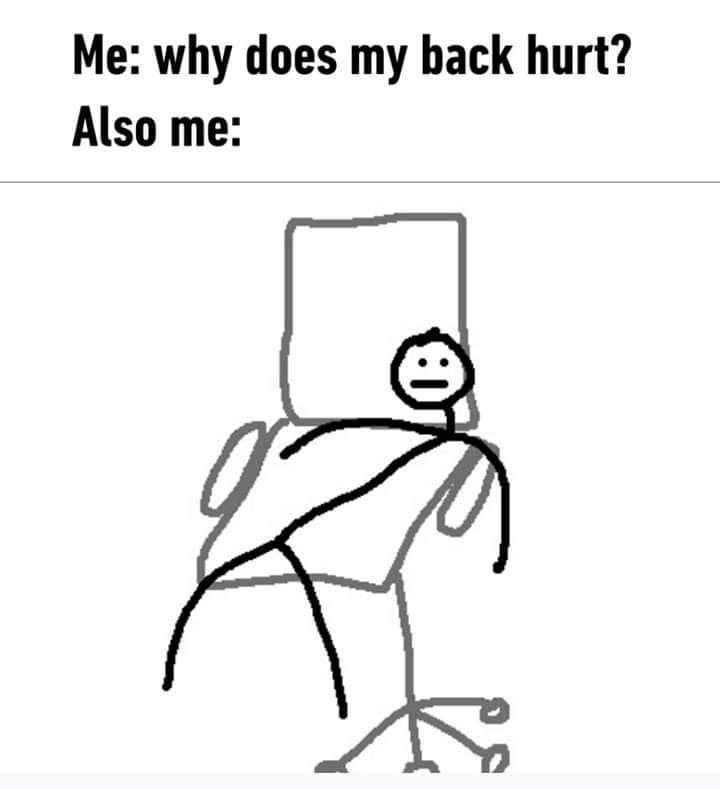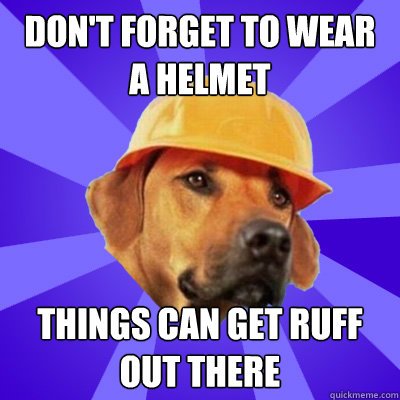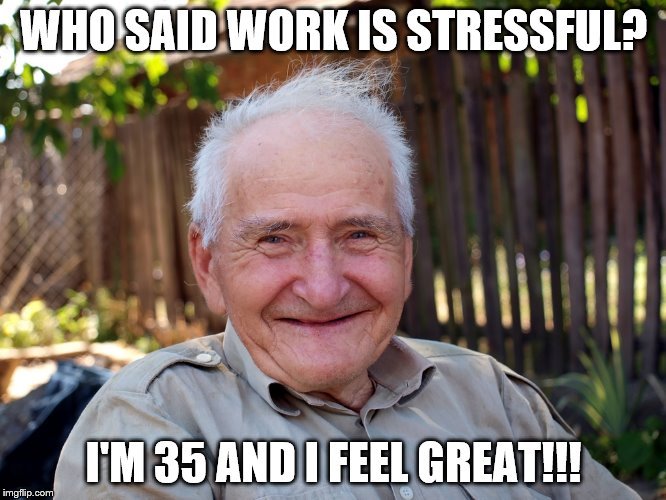What does a shared hatred of bad parking have to do with Psychosocial Risk Management within a world-renowned aeronautical engineering company?
Recently, a friend told me about the staff communications channel within their new job role. The channel includes a multitude of totally non-work related employee group chats, on topics ranging from a love of cats to photos and commentary of terrible parking in their neighbourhoods.
Why would an organisation - especially one with a very serious image - encourage what some might consider frivolous oversharing of personal trivia during company time?
The answer - (in part, at least): Psychosocial Risk Management.
What is Risk Management?
Risk management is the process of identifying, evaluating, and controlling hazards, and recording and reviewing the outcomes.
What is Psychosocial Risk?
“Psychosocial risk” is any risk that is of a psychosocial nature.
Psychosocial refers to the combined influence of psychological factors and the surrounding social environment on human behaviour.
What is a Psychosocial Hazard?
According to WorkSafe Victoria, ‘Psychosocial hazards are factors in the design or management of work that increase the risk of work-related stress and can lead to psychological or physical harm.’ (italics ours)
The Institute of Occupational Safety and Health (IOSH) defines psychosocial hazards as “those aspects of the design and management of work, and its social and organisational contexts that have the potential for causing psychological or physical harm”. (italics ours)
A note on terms
The terms Psychosocial Hazard, Psychosocial Risk and Psychosocial Risk Factor are currently used interchangeably, although that may change as this is an emerging field and these terms are still being defined. Arguably, that contributes to a feeling of ‘woolliness’ around the topic, but that is a subject for another blog.
Simply put
In very simple terms, a psychosocial hazard is anything that makes people feel crap at work, and psychological risk management is the process of assessing and controlling those hazards, and reviewing the outcomes.
Psychosocial Hazards include:
isolation - this can be a risk for anyone but includes home workers and lone workers such as security guards, production line staff in isolated roles
shift work and associated fatigue and stressors
low job control, a lack of clarity around work demands or conflicting demands (for instance, job roles where both quality and pace are targeted)
repetitive, monotonous or boring work such as picking and packing or data entry
poorly managed organisational change, ineffective communication, low perceived management support
exposure to challenging behaviours e.g social workers with challenging clients, retail staff and challenging customers
work that is outside the worker’s competency level - either too easy or too hard
high work demands such as workload, or fast pace, or time pressure, or machine timing
uncomfortable or dirty work, or high exposure to safety hazards, such as restrictive PPE, cold, hot, wet environments or regular exposure to dangerous tasks.
Psychosocial risks occur across all job types and industries.
Psychosocial hazards can (and often do) occur together
It can be helpful to compare psychosocial risk management to physical risk management, in terms of seriousness and approach. But psychosocial risk should not be approached in exactly the same way.
Psychosocial hazards cascade, meaning one can trigger another and controlling for one can control for another which is not always true for physical risks. You might slip on a banana skin and cause a fire, but it would be unlikely.
For example, conflicting job demands could exacerbate bullying, ineffective communication and overwork. Identifying the hazard with the most impact and controlling for that, could control for the others. It is therefore necessary to consider the ways in which psychosocial hazards interact with each other rather than looking at them as isolated hazards.
Psychosocial hazards can cause or exacerbate physical risks.
For example, stress can cause poor posture leading to poor ergonomic working conditions, manual handling incidents, muscular-skeletal injuries in addition to increasing the risks of a cardiac event and other chronic health conditions.
Stress, anxiety, and even boredom, can lead to back pain and other physical injuries.
Psychosocial Risk Management and Stigma
Mental health events and workplace stress are often stigmatised, and that can result in fear and uncertainty around psychosocial risk management.
It is important to remember that psychosocial risks fall under Occupational Health and Safety guidelines. The area of psychosocial risk might seem new, but once upon a time, so was wearing hard hats on construction sites and seatbelts in cars. Just like any other hazard, psychosocial risks can (and should) be assessed, measured, controlled and mitigated in a strategic and evidence-based way.
Job Design is better than cure
Effective psychosocial risk management starts with prevention. Effective prevention starts with a risk assessment and appropriate job design.
We wear hard hats on construction sites, but we prefer not to need them. The safest course of action is to remove the possibility of falling debris before anyone steps under it!
Assessing workplaces for psychosocial risks will soon be as common as hard hats on building sites.
Psychosocial injuries are common
According to data published by the UK’s Health and Safety Executive in 2021, stress and depression accounted for 50% of all work-related ill health. By contrast, slipping and tripping was the most common physical accident, with slips, trips and falls accounting for 33% of non-fatal injuries reportable under RIDDOR in 2020/2021.
It’s a bit of a statistical stretch to compare those numbers, but nonetheless gives pause for thought.
Employers do not think twice about proactively preventing slips at work, for example, providing wet floor signs, appropriate lighting on stairways, non-slip footwear, and keeping foot-traffic areas clear of trip hazards. Yet, psychosocial risk assessments and psychosocial risk management are still in their infancy (or non-existent) in many workplaces.
Back to bad parking
How can uploading photos of cats and bad parking on the company intranet mitigate psychosocial hazards?
Robust psychosocial risk management takes more than an internal communication platform. But, where robust risk assessment and solid job design also exist, a company social network can:
encourage authentic interactions that can include remote / hybrid workers, site-based staff in isolated roles, mitigating risk of isolation
enable building of cross-shift communication, shared interests and trust, which can mitigate tension that can occur between shifts (e.g day shift / night shift divide)
provide a platform for cross-departmental relationship building which would may not occur during normal business activities, this can lead to a strengthened sense of community and reduces loneliness
show employer trust which is indicative of psychological safety and job control.
encourage psychological safety. When employees feel safe to be themselves at work, they are more likely to feel safe to highlight H&S concerns, share new ideas and own mistakes.
encourage humour. Humour has been shown to relieve stress, and is associated with positive workplace wellbeing. Researchers have found that humour can provide a stress-buffering effect, and can help us to see threats as challenges or buffer the impact of trauma. Check out the research here.
A ‘cat lovers’ and ‘bad parking’ group on a company home page might seem like a small thing, but as anyone who has watched the Chernobyl documentary on Netflix will tell you, when it comes to risk management, a small variable can make a huge difference.
My boss when I tell him that posting cat memes on company time is good for psychosocial risk management.
This type of intervention might not be right for your team and is almost certainly not the only risk mitigation required. In some circumstances, a social channel could even be a hazard.
Each organisation, employee, and job role is different, and as with any other risk assessment Psychosocial Risk should be assessed by a trained professional. You wouldn’t have an untrained person risk assess and install your fire safety system. What if they accidentally installed a fire accelerant rather than a retardant?
Psychosocial risk management is serious - like the management of any other safety hazard - but effective controls can be simple, cost effective, and an opportunity to enhance the positive attributes of your organisation’s culture.
Now what?
In this article, we have covered what psychosocial risk is.
Coming up next in our series, we’ll be looking in more detail at why psychosocial risk matters, how you can manage psychosocial risk (even in higher-risk or highly structured industries) and how Glia can help organisations to plan and execute a robust psychosocial risk assessment.
Sign up to our newsletter or follow us on LinkedIn for our blog updates.
Blog by: Ngaire Wallace - follow the writer here.







